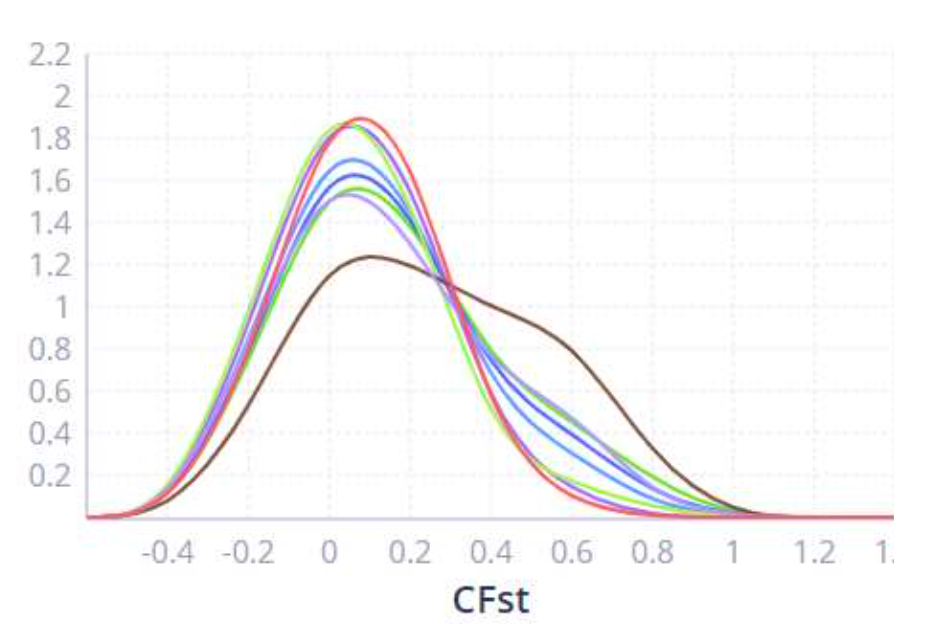The Cultural Fixation Index (CFST)

The Cultural Fixation Index (CFST) is the technical innovation co-developed by Michael Muthukrishna that underlies the Culturalytik analytical tool. It is based on the Fixation Index (Fst) commonly used in cultural evolutionary theory. The CFST uses cultural beliefs and behaviours surveyed over decades in the World Value Survey to allow for cultural and psychological distance measurement between national populations. To measure corporate culture, the CFST applies the same technique to your company’s sentiment survey results.
In practice, the CFST advantage is that it captures culture as a copula (as represented on the picture), focusing on the distribution of cultural traits rather than frequentist statistics such as averages. For example, according to Hofstede’s cultural compass Turkey and Brazil have similar cultural profiles because they are, on average, the same. However, common sense hints they are great cultural differences between those countries, differences which the CFST is able to decompose and reveal through the use of distributional differences and variances.
Culturalytik’s CFST has a range of additional advantages: it uses a state of the art data imputation technique (generalized low rank modelling), it is paired with qualitative metrics sourced from interviews and focus groups contextualizing the revealed statistics and is predictive of practical behavioural outcomes such as in the case of corporations retention and attrition. Data imputation is the preferred option in science nowadays to deal with missing data. It is known that survey fatigue leads a significant portion of employees to not answer the deployed tool. Hence, it could be that the employee’s choosing to fill out a survey have common traits such as a preference for menial tasks, thus aren’t representative of the whole company. Generalized low rank modelling corrects for this in the ideal manner (further reading can be found here).
Michael’s paper introducing the CFst in more details is available here, as well as a simplified explanation of the paper available here.